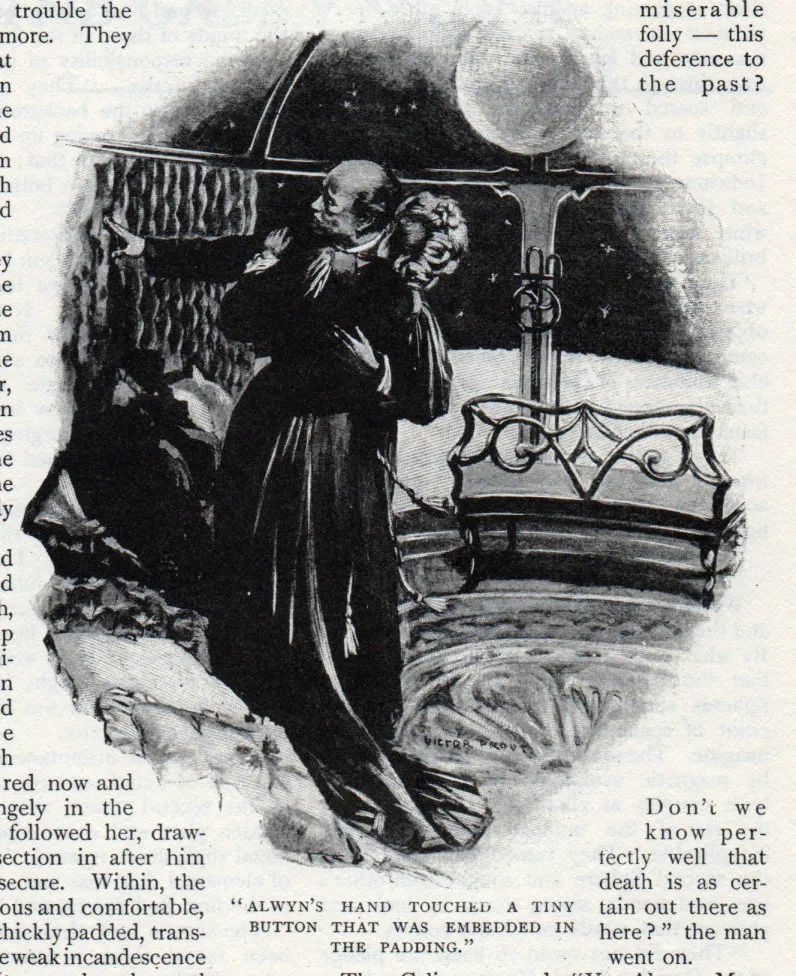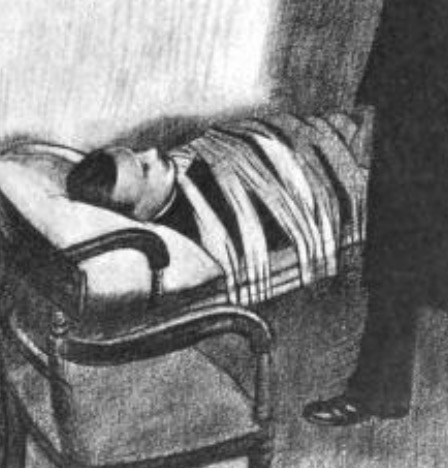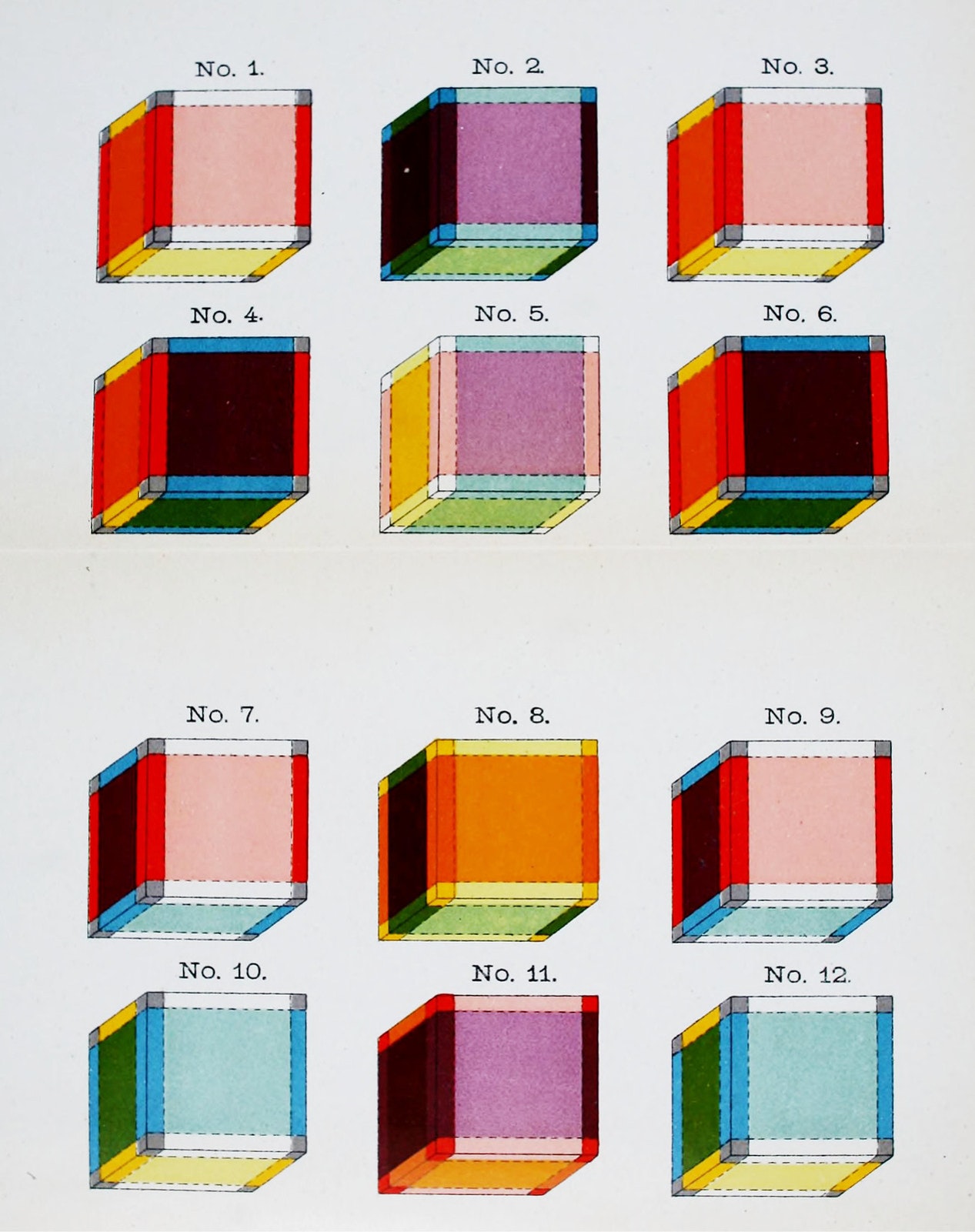MORE VOICES — EXCERPTS
By:
December 11, 2023

In August, the MIT Press published More Voices from the Radium Age, a Radium Age proto-sf anthology edited and introduced by HILOBROW’s Josh Glenn. The Boston Globe ran the following item by Josh, along with the following story excerpts, in the IDEAS section — on July 30.
I’ve spent the past few years working to rescue neglected “proto-science fiction” novels and stories — first published during the science fiction genre’s nascent 1900–1935 era — from obscurity.
These works include Cicely Hamilton’s Theodore Savage (1922), one of the first thrillers to imagine the Great War as foretelling the downfall of civilization; E.V. Odle’s The Clockwork Man (1923), perhaps the earliest cyborg adventure; and Of One Blood (1902–1903), by Boston’s own Pauline Hopkins, which has been called “Black Panther before Black Panther.”
Why describe such books as “proto”-science fiction? Because the now-familiar term “science fiction” — a coinage of the pioneering pulp magazine editor Hugo Gernsback — wouldn’t take root until late in this period.
The sum of my work to date is the MIT Press’s “Radium Age” series, which so far comprises a dozen novels and two story anthologies. Well before I dubbed the era science fiction’s Radium Age, I was a fan of A. Merritt, Rose Macaulay, Olaf Stapledon, Charlotte Perkins Gilman, and other future-focused speculative authors of the period. I enjoy the fact that while it’s less naively optimistic than the Victorian-era “scientific romances” of H.G. Wells, Jules Verne, and their ilk, at the same time — when it comes to such outré visions as the detoxification of masculinity, say, or the greenifying of cities, or the forced appropriation of the surplus value created by workers — this body of literature offers a welcome antidote to the wised-up “realism” of Isaac Asimov, Robert Heinlein, and other avatars of science fiction’s so-called Golden Age.
Oh yeah, and it’s fun to read too!
In addition to the overlooked classics that the MIT Press is reissuing, we’re working on a collection of stories by Francis Stevens (the first American woman to publish widely in proto-sf pulp magazines), an anthology of proto-sf stories translated for the first time from Bangla into English, and a variety of other multi-authored anthologies. The second of these latter, More Voices from the Radium Age, hits bookstores on August 1. What follows are a few excerpts from that collection’s stories.
THE LAST DAYS OF EARTH
George C. Wallis’s 1901 eco-catastrophe depicts a far-future Earth whose sun has grown dim, and asks us to imagine what it might be like for humankind’s last survivors.

The man … noted, with apparently keen interest, all the things that were so familiar to him — the severely plain walls, transparent on one side, but without window-frame or visible door in their continuity; the chilling prospect of a faintly-lit expanse of snow outside; the big telescope that moved in an airtight slide across the ceiling, and the little motor that controlled its motions; the electric radiators that heated the place, forming an almost unbroken dado round the walls; the globe of pale brilliance that hung in the middle of the room and assisted the twilight glimmer of the day; the neat library of books and photo-phono cylinders, and the tier of speaking machines beneath it; the bed in the further corner, surrounded by yet more radiators; the two ventilating valves; the great dull disc of the Pictorial Telegraph: and the thermometer let into a vacant space of floor. On this last his glance rested for some time, and the woman’s also. It registered the degrees from absolute zero; and stood at a figure equivalent to 42º Fahrenheit. From this tell-tale instrument the eyes of the two turned to each other, a common knowledge shining in each face. The man was the first to speak again.
“A whole degree, Celia, since yesterday. And the dynamos are giving out a current at a pressure of 6,000 volts. I can’t run them at any higher efficiency. That means that any further fall of temperature will close the drama of this planet. Shall we go tonight?”
THE REPUBLIC OF THE SOUTHERN CROSS
The Russian Symbolist poet Valery Bryusov was fascinated with the notion of a future dystopia in which one’s every action would be regulated. Bryusov’s 1907 story predicts the outbreak, in the domed polar city of Zvezdny, of an epidemic of contradictory-ness.
Since the detection of the disease in its early stages was very difficult, the chronicle of the first days of the epidemic is full of comic episodes. A train conductor on the metropolitan railway, instead of receiving money from the passengers, himself pays them. A policeman, whose duty it was to regulate the traffic, confuses it all day long. A visitor to a gallery, walking from room to room, turns all the pictures with their faces to the wall. A newspaper page of proof, being corrected by the hand of a reader already overtaken by the disease, is printed next morning full of the most amusing absurdities. At a concert, a sick violinist suddenly interrupts the harmonious efforts of the orchestra with the most dreadful dissonances. A whole long series of such happenings gave plenty of scope for the wits of local journalists. But several instances of a different type of phenomenon caused the jokes to come to a sudden end. The first was that a doctor overtaken by the disease prescribed poison for a girl patient in his care and she perished. For three days the newspapers were taken up with this circumstance. Then two nurses walking in the town gardens were overtaken by “contradiction,” and cut the throats of forty-one children. This event staggered the whole city. But on the evening of the same day two victims fired the mitrailleuse [machine gun] from the quarters of the town militia and killed and injured some five hundred people.
At that, all the newspapers and the society of the town cried for prompt measures against the epidemic. At a special session of the combined Board and Legal Chamber it was decided to invite doctors from other towns and from abroad, to enlarge the existing hospitals, to build new ones, and to construct everywhere isolation barracks for the sufferers, to print and distribute five hundred thousand copies of a brochure on the disease, its symptoms and means of cure, to organise on all the streets of the town a special patrol of doctors and their helpers for the giving of first aid to those who had not been removed from private lodgings. It was also decided to run special trains daily on all the railways for the removal of the patients, as the doctors were of the opinion that change of air was one of the best remedies. Similar measures were undertaken at the same time by various associations, societies, and clubs. A “society for struggle with the epidemic” was even founded, and the members gave themselves to the work with remarkable self-devotion. But in spite of all these measures the epidemic gained ground each day….
THE THIRD DRUG
In this 1908 proto-sf horror story, Edith Nesbit, whom we remember today for Five Children and It and other delightful “contemporary fantasies,” explores a theme that would become increasingly popular in subsequent decades: superhuman intelligence.

As the bandage clasped his knees Roger moved.
“For God’s sake, no!” the doctor cried; “the time is so near. If you cease to submit it is death.”
With an incredible accelerated swiftness he swept the bandages round and round knees and ankles, drew a deep breath — stood upright.
“I must make an incision,” he said — “in the head this time. It will not hurt. See! I spray it with the Constantia Nepenthe; that also I discovered. My boy, in a moment you know all things — you are as a god. Be patient. Preserve your submission.”
And Roger, with life and will resurgent hammering at his heart, preserved it.
He did not feel the knife that made the cross cut on his temple, but he felt the hot spurt of blood that followed the cut, he felt the cool flap of a plaster spread with some sweet, clean smelling unguent that met the blood and stanched it. There was a moment — or was it hours? — of nothingness. Then from that cut on his forehead there seemed to radiate threads of infinite length, and of a strength that one could trust to — threads that linked one to all knowledge past and present. He felt that he controlled all wisdom, as a driver controls his four-in-hand. Knowledge, he perceived, belonged to him as the air belongs to the eagle. He swam in it, as a great fish in a limitless ocean.
He opened his eyes and met those of the doctor, who sighed as one to whom breath has grown difficult.
“Ah, all goes well. Oh, my boy, was it not worth it? What do you feel?”
“I. Know. Everything,” said Roger.
A VICTIM OF HIGHER SPACE
Fans of “weird fiction” will tell you that Algernon Blackwood was an important precursor to H.P. Lovecraft and everyone since. This 1914 story of Blackwood’s, which features the occult detective John Silence, is narrated by an explorer of four-dimensional space.

“I procured the implements and the coloured blocks for practical experiment, and I followed the instructions carefully till I had arrived at a working conception of four-dimensional space. The tesseract, the figure whose boundaries are cubes, I knew by heart. That is to say, I knew it and saw it mentally, for my eye, of course, could never take in a new measurement, or my hands and feet handle it.
“So, at least, I thought,” he added, making a wry face. “I had reached the stage, you see, when I could imagine in a new dimension. I was able to conceive the shape of that new figure which is intrinsically different to all we know — the shape of the tesseract. I could perceive in four dimensions. When, therefore, I looked at a cube I could see all its sides at once. Its top was not foreshortened, nor its farther side and base invisible. I saw the whole thing out flat, so to speak. And this tesseract was bounded by cubes! Moreover, I also saw its content — its insides.”
“You were not yourself able to enter this new world,” interrupted Dr. Silence.
“Not then. I was only able to conceive intuitively what it was like and how exactly it must look. Later, when I slipped in there and saw objects in their entirety, unlimited by the paucity of our poor three measurements, I very nearly lost my life. For, you see, space does not stop at a single new dimension, a fourth. It extends in all possible new ones, and we must conceive it as containing any number of new dimensions.”
THE THING FROM — ‘OUTSIDE’
If this 1923 thriller by long-time Maine resident George Allen England, about an alien stalking an expedition in the Canadian wilderness, reminds you of John Carpenter’s The Thing, you’re right. That movie was based on a later sci-fi story modeled upon this one.
With a very thriving fear in his heart, Jandron peered at her for a moment. He fell to muttering:
“I’m Wallace Jandron. Wallace Jandron, 37 Ware Street, Cambridge, Massachusetts. I’m quite sane. And I’m going to stay so. I’m going to save her! I know perfectly well what I’m doing. And I’m sane. Quite, quite sane!”
After a time of confused and purposeless wrangling, they got a fire going and made coffee. This, and cube bouillon with hardtack, helped considerably. The camp helped, too. A house, even a poor and broken one, is a wonderful barrier against a Thing from — Outside.
Presently darkness folded down. The men smoked, thankful that tobacco still held out. Vivian lay in a bunk that Jandron had piled with spruce boughs for her, and seemed to sleep. The Professor fretted like a child, over the blisters his paddle had made upon his hands. Marr laughed, now and then; though what he might be laughing at was not apparent. Suddenly he broke out:
“After all, what should It want of us?”
“Our brains, of course,” the Professor answered, sharply.
MORE RADIUM AGE SCI FI ON HILOBROW: RADIUM AGE SERIES from THE MIT PRESS: In-depth info on each book in the series; a sneak peek at what’s coming in the months ahead; the secret identity of the series’ advisory panel; and more. | RADIUM AGE: TIMELINE: Notes on proto-sf publications and related events from 1900–1935. | RADIUM AGE POETRY: Proto-sf and science-related poetry from 1900–1935. | RADIUM AGE 100: A list (now somewhat outdated) of Josh’s 100 favorite proto-sf novels from the genre’s emergent Radium Age | SISTERS OF THE RADIUM AGE: A resource compiled by Lisa Yaszek.
